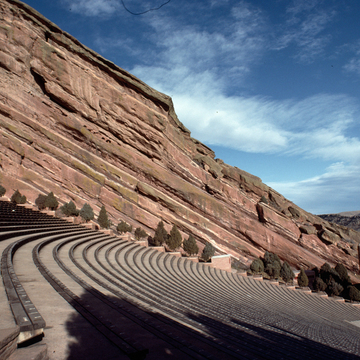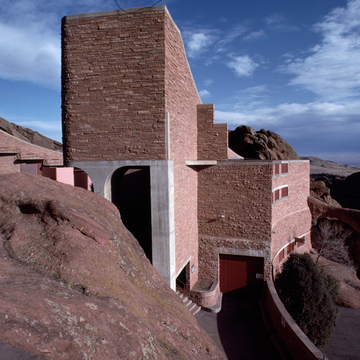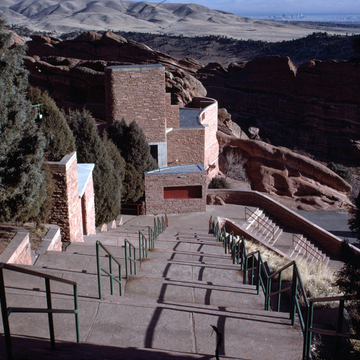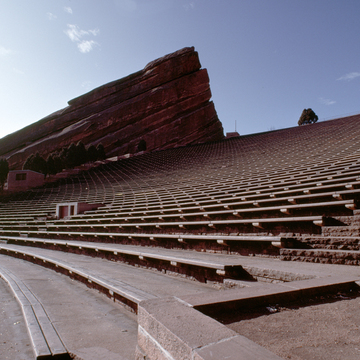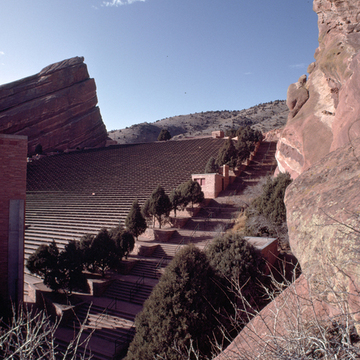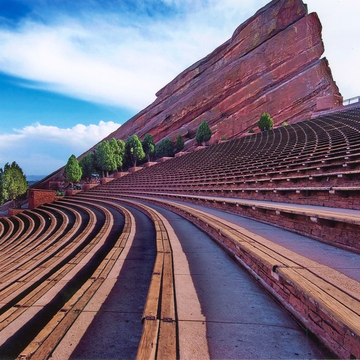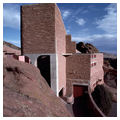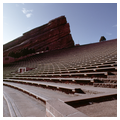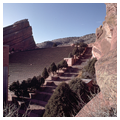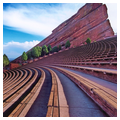The ultimate beauty of this acoustically superb outdoor theater is the natural setting of massive sandstone and metamorphic rocks tilted upward by volcanic action. The May 1945 Architectural Forum praised “the admirable
You are here
Red Rocks Outdoor Amphitheater
1941, Burnham F. Hoyt. In Red Rocks Park on northwest side of Morrison
If SAH Archipedia has been useful to you, please consider supporting it.
SAH Archipedia tells the story of the United States through its buildings, landscapes, and cities. This freely available resource empowers the public with authoritative knowledge that deepens their understanding and appreciation of the built environment. But the Society of Architectural Historians, which created SAH Archipedia with University of Virginia Press, needs your support to maintain the high-caliber research, writing, photography, cartography, editing, design, and programming that make SAH Archipedia a trusted online resource available to all who value the history of place, heritage tourism, and learning.

